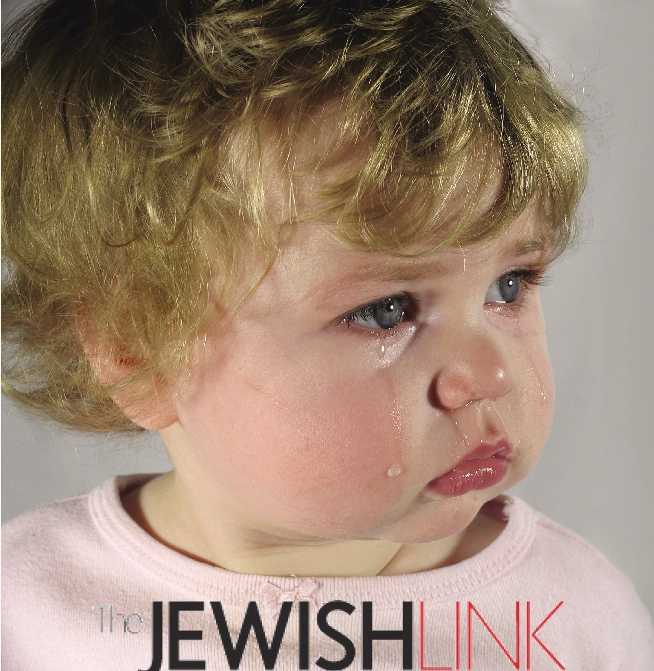
Domestic violence among Jewish families exists right alongside the general population at about 15% of homes. Using the Jewish Coalition Against Domestic Abuse website as reference (www.jcada.org) here are some statistics about abuse in our communities:
*According to conservative estimates, 1 million women suffer nonfatal violence by an intimate partner. Other estimates state that more than four million women a year experience a serious assault by an intimate partner.
*Violence against women occurs in 20% of dating couples and 25-33% of adolescent abusers reported their violence served to “intimidate, frighten or force the other person to give me something.”
*Each year, approximately 3.3 million children are exposed to violence by family members against their mothers or female caretakers.
*In homes, where partner abuse occurs, children are 1,500 times more likely to be abused and 40-60% of men who abuse women also abuse children.
*Domestic abuse has immediate and long-term detrimental effects on children. Although children may not be physically scarred, they may suffer emotional, behavioral and physical effects from witnessing abuse.
*While relationship abuse is perpetrated by both men and women, most victims are female. According to the National Crime Victimization Survey for 1992-1996, men were the perpetrators in 85% of intimate partner abuse.
(From the American Bar Association Commission on Domestic Violence)
Surveys find that men and women assault one another and strike the first blow at approximately equal rates. (Sources: Archer, J. (2000). Sex differences in aggression between heterosexual partners: A meta-analytic review. Psychological Bulletin, 126 (5), 651-680.
Dutton, D., Kwong, M., & Bartholomew, K. (1999). Gender differences in patterns of relationship violence in Alberta. Canadian Journal of Behavioural Science, 31, 150-160
Morse, B. (1995). Beyond the Conflict Tactics Scale: Assessing gender differences in partner violence. Violence and Victims, 10 (4), 251-269.
Straus, M. (1993). Physical assaults by wives: A major social problem. In R. Gelles & D. Loseky (Eds.), Current controversies on family violence (pp. 67-87). Newbury Park, CA: Sage.)
When most people think of domestic abuse an image of a drunk man hovering over a feeble woman comes to mind with the children hiding under their beds. This scenario does take place, however the bulk of domestic abuses are more subtle: A slap upside the back of the head, a slap of the face, forceful words of “shut up and get out of my face” or blatant name calling and cursing. Grabbing an arm tightly or grabbing someone by the hair. Forcing intimacy on a partner when it is not wanted. Threatening divorce or abandonment. Manipulating and stealing power in conversations by walking out of the house or room, hanging up the phone mid-conversation, intentionally not answering the phone. Degrading a spouse or child with berating words. All of these constitute abuses and all of these leave a mark—if not physically then emotionally and psychologically. Yet these actions happen every single day in our Jewish homes behind the doors of families we know and love. Sometimes the abuser is one spouse, sometimes it’s both spouses, sometimes it’s a parent with a child, and sometimes it’s between siblings. Regardless, abuse is ugly and the impact of abuse even uglier. The good news is that HaShem created tshuvah—the opportunity for those who have done wrong to right themselves through sincere effort and change at the core. It’s hard work, but it is the only solution to stopping abuses.
To better understand what constitutes abuse, let’s review the JCADA material:
Physical Abuse — Hitting, kicking, pushing, punching, slapping, choking, grabbing, throwing objects at a partner, threatening with a weapon, driving recklessly with partner in a car, refusing to help a sick partner.
Emotional Abuse — Constant criticism, making humiliating remarks, name-calling, mocking, yelling, swearing, making victim think she is crazy, making victim feel guilty, making impossible rules and punishing victim for breaking these rules.
Economic Abuse — Withholding money, credit cards, keeping a partner from work or school, interfering with partner’s work or school, giving an allowance, withholding information and access to family finances.
Sexual Abuse — Forcing the act on an unwilling partner, demanding acts that the victim does not want to perform, degrading treatment, being treated as an object.
Threats and Intimidation — Threatening to harm victim, children, family members, and pets. This includes putting partner in fear using looks, actions and gestures, shouting, smashing things and destroying property.
Using “Male Privilege” — Treating partner like a servant, making all the “big” decisions,” acting like the master of the house.
Isolation — Controlling what partner does, who she sees and talks to, where she goes, monitoring phone calls, reading mail, taking car keys.
Ask yourself: Have I ever done any of these things to someone?
Ask yourself: Has anyone done any of these things to me?
If I was a betting woman, I would bet that close to 100% of the readers of this column have: been abused, been an abuser, or have been both at some point in their lives and/or marriages. So why is it that so many people perpetrate and/or experience abuses? The reasons are endless—temperament, childhood wounds, regrets, deep-seeded resentments, lack of fulfillment, fear, anger, insecurity, inferiority, superiority, poor role models, etc. Human beings are highly complex creatures who are in a constant state of change. Life experiences and family dynamics leave their imprint upon us causing shifts. Our path is often bumpy. Some people have control of themselves most of the time and lose it once in a rare while. Other people lose control on a daily
By: Mia Adler Ozair
Mia Adler Ozair, MA, LPCC, NCC is alicensed clinical psychotherapist and educator
with a private practice in Beverly Hills, California. Mia is licensed in both California and
Illinois and she can be reached through her
website at www.bhcounselingcenter.com or
followed on Twitter @MiaAdlerOzair.